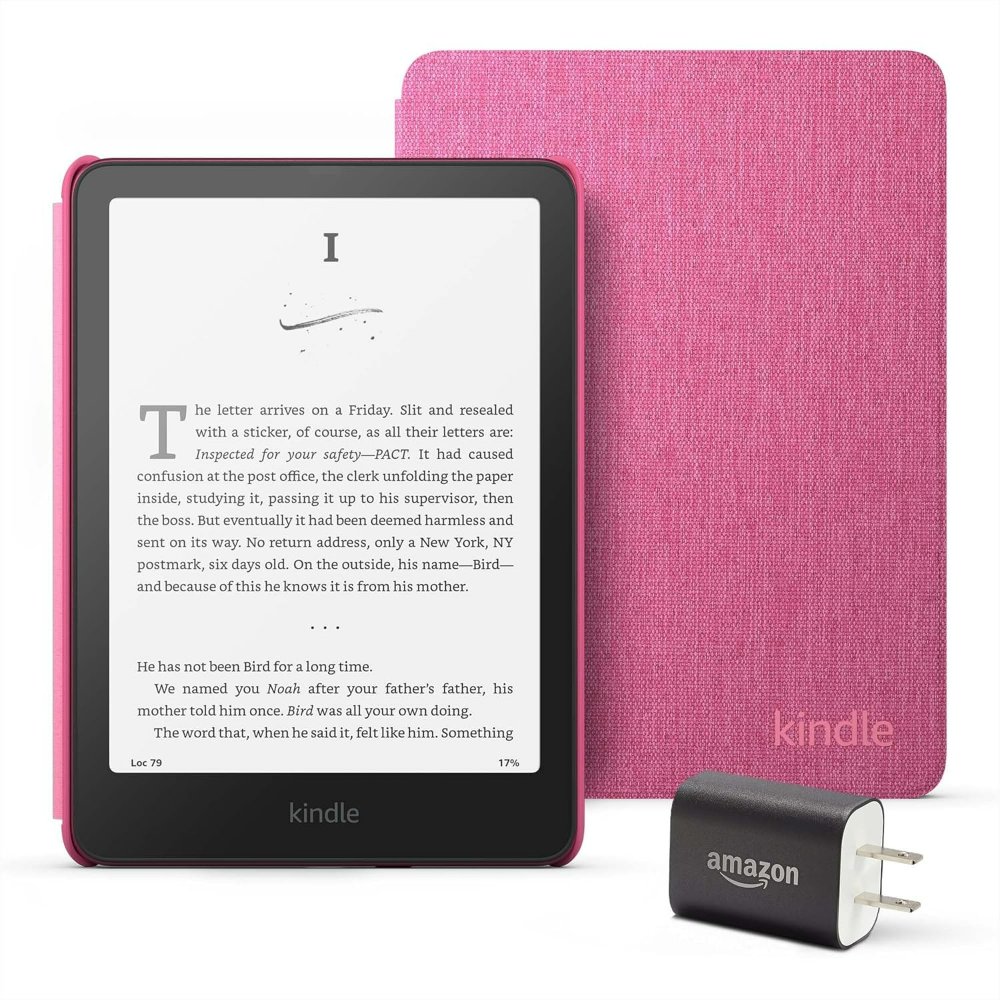Identifying the Problem
Before diving into more complex techniques, it’s essential to identify why your Kindle won’t charge. Start with the basics by examining each component involved in charging. The charger, cable, and Kindle itself can each be the culprit behind the problem. Correctly identifying the issue is crucial to finding a suitable solution.
Checking the Charger and Cable
The first step is to inspect your charger and cable. A faulty cable or adapter is often the reason for charging issues. Here’s how to check:
- Look for visible damage on the cable. Fraying or bent connectors can prevent proper charging.
- Try using the charger and cable with another device. If they don’t work, they’re likely the issue.
- Swap your cable and charger with ones you know are functional. If your Kindle charges, you’ve found the problem.
Examining the Power Source
Next, assess the power source where you usually plug in your Kindle. Here are a few tips:
- Plug another device into the same socket to verify if it’s providing power.
- If you’re using a power strip, make sure it’s turned on or try a direct wall outlet.
- Check for loose connections or issues with the outlet itself.
Keeping these elements in mind ensures you are not overlooking simple fixes. Sometimes, the solution is as simple as changing the power outlet or getting a new charger.

Inspecting the Kindle’s Charging Port
Last is to inspect your Kindle’s charging port. Dust, debris, or damage can hinder the charging process. Here’s how to inspect the port:
- Use a flashlight to look inside the port for any visible debris or damage.
- Gently clean the port with a dry, soft-bristled brush to remove any dust.
- Be careful not to insert objects that could cause further damage.
If you’ve checked everything and your Kindle still won’t charge, it could be due to more complex issues like software problems or battery degradation. These issues will require a deeper level of troubleshooting. By identifying and ruling out the external factors, you’re set to move on to diagnosing common causes that might need more technical solutions.
Common Causes of Kindle Charging Issues
Once you’ve ruled out the more obvious issues and your Kindle still won’t charge, you might be dealing with one of several common internal problems.
Faulty Cables and Adapters
Even if your cables and adapters appear undamaged, they can still fail internally. If you’ve already tried using a different charger and cable, and the problem persists, consider these possibilities:
- Intermittent connections within the cable.
- A broken wire inside the adapter.
- Voltage or amperage issues with your charger.
Faulty cables and adapters are widespread and easily replaced.
Software Glitches
Sometimes, a Kindle won’t charge due to a software hang-up. It’s less obvious but not rare. Keep an eye out for these signs:
- Your Kindle freezes or crashes more often.
- It doesn’t recognize when it’s connected to power.
- The charging icon appears and disappears randomly.
A software reset can often clear these glitches.
Battery Degradation
Like all rechargeable batteries, the one in your Kindle has a lifespan. Over time, the battery’s ability to hold a charge diminishes. Here are clues that point to battery degradation:
- Your Kindle charges slowly or can’t reach full charge.
- The battery drains quickly even after a full charge.
- It doesn’t handle heavy usage as well as before.
If these sound familiar, your Kindle’s battery might need replacement.

Basic Troubleshooting Steps
Before moving on to more advanced solutions, it’s essential to try some basic troubleshooting steps. If your Kindle won’t charge, these practices can sometimes resolve the issue without the need for technical support or repairs.
Rebooting Your Kindle
A simple but often effective solution is to reboot your Kindle. This can clear minor software glitches that might be preventing charging. To reboot:
- Press and hold the power button for about 40 seconds.
- Wait for your Kindle to restart.
- Try charging again after the device powers back on.
Rebooting can refresh your Kindle’s system and often resolves charging issues related to software.
Cleaning the Charging Port
Over time, dust and debris can accumulate in the charging port, which can interfere with the connection. To clean the charging port:
- Turn off your Kindle first.
- Use a dry, soft-bristled brush gently to remove any buildup.
- Avoid using metal objects or liquids that can damage the port.
A clean charging port can make a significant difference in your Kindle’s ability to charge effectively.
Trying Different Chargers
Sometimes, the problem lies not with the Kindle but with the charger itself. To isolate the issue, try using different chargers:
- Connect your Kindle to another wall charger that is known to work.
- Use a computer USB port to charge your Kindle.
- Try a car charger if available.
Experimenting with different chargers can help you identify if the issue is with the cable, adapter, or the Kindle’s charging system.
Advanced Solutions
If basic troubleshooting steps haven’t fixed your Kindle’s charging issue, it’s time to try more advanced solutions. These steps are a bit more complex and might resolve deeper software or hardware problems. Let’s explore them.
Updating Kindle Firmware
Outdated firmware can cause charging issues. To ensure your Kindle operates smoothly, check for updates regularly. Here is how to update your device:
- Connect your Kindle to Wi-Fi.
- Tap the ‘Menu’ icon on the home screen.
- Select ‘Settings,’ then ‘Menu’ again.
- Choose ‘Update Your Kindle’ if available.
- Click ‘OK’ to confirm and start the update.
Updating may take some time. After the update, try charging your Kindle again.

Resetting Your Kindle to Factory Settings
If updating doesn’t work, a factory reset might. This action wipes your Kindle clean, including all content and settings, so back up important data first. To reset:
- Go to ‘Settings’ on your Kindle.
- Choose ‘Device Options,’ then ‘Reset to Factory Defaults.’
- Confirm you want to reset your device.
A factory reset will return your Kindle to its original state. After this, set up your Kindle as a new device and attempt to charge it once more.
Contacting Kindle Support
When all else fails, seek help from Kindle Support. The support team can guide you through complex issues over the phone or through chat. Here’s how to reach them:
- Visit the Amazon support website.
- Choose ‘Contact Us.’
- Follow the instructions to get help for your Kindle.
Kindle Support can offer specialized advice and determine if your device needs repair or replacement. They’re your lifeline when your Kindle won’t charge and you’ve exhausted other options.
Preventative Measures
To avoid future charging issues with your Kindle, it’s crucial to adopt preventative measures. By being proactive, you can extend the lifespan of your device and maintain its charging efficiency. Here are some strategies to keep in mind.
Proper Charging Practices
Good charging habits can prevent many common issues with your Kindle. Remember these tips:
- Always use the original charger and cable provided with your Kindle.
- Avoid charging your Kindle with a fast charger not designed for it.
- Disconnect your Kindle once it reaches a full charge to prevent overcharging.
- Do not use your Kindle while it is charging, as it may increase wear on the battery.
By following these guidelines, you minimize the risk of damaging your Kindle’s battery or charging port.
Protecting Your Kindle
Your Kindle is an investment worth protecting. Keep it safe with these practices:
- Use a protective case to shield it from drops and impacts.
- Avoid exposing your Kindle to extreme temperatures and moisture.
- Store your Kindle in a clean and dust-free environment when not in use.
- Keep your Kindle away from loose change, keys, and other objects that could scratch it.
Taking care to protect your Kindle can help prevent physical damage that could lead to charging issues.
Regular Maintenance Tips
Regular maintenance checks can catch potential problems before they escalate. Incorporate these habits:
- Regularly inspect your Kindle’s charging port for dust and debris.
- Gently clean the screen and exterior with a soft, dry cloth.
- Keep your Kindle’s software up to date to ensure optimal performance.
- Periodically check your cables and adapters for wear or damage.
Staying on top of maintenance is a straightforward way to ensure your Kindle remains in good working order.
What to Do if Your Kindle Still Won’t Charge
When you’ve tried all the troubleshooting steps above and your Kindle won’t charge, it’s time to consider other options. Here’s what you can do next.
Replacement Options
If your Kindle is not charging, it may need a replacement. Check these options:
- Look for an official replacement from Amazon.
- Search for third-party power accessories compatible with your Kindle.
- Remember to get products that meet the Kindle specifications.
Using the appropriate charger for your Kindle is crucial to avoid further issues.
Warranty and Repairs Information
Understand your Kindle’s warranty status:
- Check if your device is still under warranty.
- Contact Amazon customer support for warranty claims.
- Find out about repair services offered by Amazon.
If your warranty has expired, consider local repair shops. Make sure they have experience with Kindle devices. Always compare the cost of repair to the price of a new Kindle.
Knowing your options gives you a clear path to follow when your Kindle won’t charge. Remember to choose a solution that suits your needs and budget.
Final Thoughts
After carefully following the step-by-step guide for identifying and rectifying Kindle charging issues, some problems may still persist. It’s critical at this point to consider your next steps thoughtfully.
When to Seek Professional Help
If your Kindle won’t charge after exhausting all DIY options, seek professional help. Look for signs like:
- Persistent software issues after resets.
- Significant battery performance drop, not improved by simple fixes.
- Irreversible physical damage to the charging port or internals.
In these scenarios, professional technicians can provide the expertise necessary for more complicated repairs.
The Cost of Repair vs. Replacement
Before deciding on a repair, weigh the cost against getting a new Kindle. Consider factors such as:
- The age and condition of your current Kindle.
- How much you would pay for repairs versus a new device.
- The potential benefits of updated Kindle models with new features.
It may be more cost-effective to replace an older model than to pay for extensive repairs. Make your decision based on practicality and financial sense.
Addressing Kindle charging issues can be straightforward, but sometimes professional intervention or replacement is the best course of action. Stay informed about your options to make the best decision for your situation.
